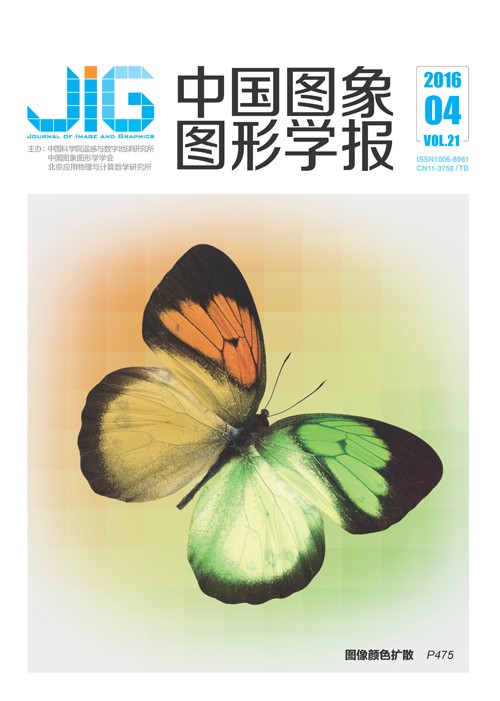
特征学习的单幅图像去雾算法
摘 要
目的 雾霾天气使图像降质,严重影响军事、交通和安全监控等领域信息系统的正常运作,因此图像去雾具有重要研究意义。目前主流的单幅图像去雾算法主要利用各种与雾相关的颜色特征实现,但不同的颜色先验知识往往存在各自的场景局限性。为提高图像去雾的普适性,提出一种特征学习的单幅图像去雾方法。方法 首先通过稀疏自动编码机对有雾图像进行多尺度的纹理结构特征提取,同时抽取各种与雾相关的颜色特征。然后采用多层神经网络进行样本训练,得到雾天条件下纹理结构特征及颜色特征与场景深度间的映射关系,并估算出有雾图像的场景深度图。最后结合大气散射模型,根据场景深度图复原无雾图像。结果 与主流去雾算法的结果定性对比,复原后的图像细节更清晰,颜色更自然。采用均方误差和结构相似度定量评价各算法去雾结果与真实无雾图像的相似度,本文算法结果与真实无雾场景间的相似度最高,达到99.9%。结论 对实验结果的定性及定量分析表明,本文算法能有效获取有雾图像的场景深度,复原出视觉效果理想的无雾图像,且具有很好的场景普适性。
关键词
Single image dehazing algorithm by feature learning
Mai Jiaming1, Wang Meihua1, Liang Yun1, Cai Ruichu2(1.College of Mathematics and Informatics, South China Agricultural University, Guangzhou 510642, China;2.School of Computer Science and Technology, Guangdong University of Technology, Guangzhou 510006, China) Abstract
Objective Fog-degraded images seriously affect the normal operation of the information systems of the military, traffic, safety monitoring, and other fields. Hence, research on image dehazing has become important and practical. Most existing single image dehazing approaches focus on investigating haze-relevant color features. However, different color priors have their respective limitations. To improve the adaptability of the image dehazing algorithm, we propose a single image dehazing algorithm by feature learning. Method First, we extract multi-scale textural and structural features from a hazy image by using a sparse auto encoder; the haze-relevant color features are obtained as well. Second, we model the scene depth with the extracted textural, structural, and color features by using multi-layer neural networks. By training samples with the neural network model, the relationship between scene depth and the features is determined, and the depth map of the hazy image is restored. Finally, the haze-free image with the depth map is restored according to the atmospheric scattering model. Result Compared with the results of mainstream algorithms, those of the proposed algorithm are more natural and have more details. Qualitative evaluation of the similarity between our results and the ground truth haze-free images indicates that our results have high similarity to the ground truth situation, reaching 99.9%. Conclusion Experiments show that the proposed algorithm can effectively restore the depth map of a hazy image and produce a high-quality haze-free image with good adaptability.
Keywords
|



 中国图象图形学报 │ 京ICP备05080539号-4 │ 本系统由
中国图象图形学报 │ 京ICP备05080539号-4 │ 本系统由